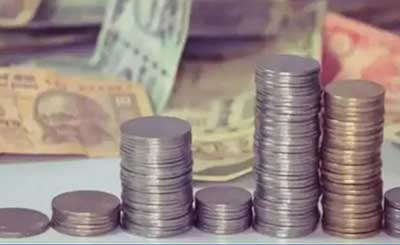Relevance: GS-3: Indian Economy and issues relating to Planning, Mobilisation of Resources, Growth, Development and Employment; Government Budgeting;
Key Phrases: ‘Monthly Economic Review’; Fiscal Deficit (FD), Current Account Deficit (CAD); Inflationary pressures; Bigger multiplier effect; CAPEX; Capital flight;
Context
- The Ministry of Finance has published its ‘Monthly Economic Review’,
which inter-alia states:
- The World is looking at a distinct possibility of widespread stagflation; and
- India is at low risk of stagflation due to its prudent stabilisation policies.
- But Indian economy is increasingly facing threats from the twin deficit,
namely
- Fiscal Deficit
- Current Account Deficit
Key Highlights of the Article
Crises at the global level: Following crises have emerged:
- The Russia-Ukraine; and
- Unrepaired global supply chains due to the brunt of the COVID Pandemic.
These would add to the inflationary pressures causing further crises in the global economy.
Repercussions of the crises:
- The trade disruptions.
- Export bans by Turkey, Ukraine, Russia, etc.
- The resulting surge in global commodity prices.
What is Stagflation?
- It refers to the stage in an economy where stagnation of demand is present along with high levels of inflation.
- Under normal circumstances, Economies follow Phillip Curve i.e. with economic growth comes inflation, which in turn should lead to more jobs and less unemployment.
- Hence, stagflation is an exceptional case which requires special measures to resolve the issue.
What is a Fiscal Deficit?
- It is the amount of money that the government has to borrow in any year to fill the gap between its expenditures and revenues.
The emergence of Fiscal Deficit as a crisis
- Prices of Fuels have skyrocketed in the International market.
- As India is heavily dependent on oil imports (85% of oil demands).
- The domestic prices soared as well.
- The government had to undergo duty cuts to reduce some inflationary
pressure which is itself at an all-time high.
- This foregone revenue has increased the gap between revenue and expenditure, signalling an emerging crisis.
How does the Fiscal Deficit harm the economy?
- Crowding out Private Investment
- Higher levels of fiscal deficit imply that the government eats into the pool of investible funds in the market.
- These funds could have been used by the private sector for its own investment needs.
- This is counterproductive to the government’s initiatives to kickstart the economy to create a self-sustaining cycle of private financial investment.
- Reduces the pool for Capital Expenditure
- Usually, a fiscal deficit is undertaken to meet the revenue expenditure (to meet short-term needs) and hence more productive expenditure (capital expenditure) takes a back seat.
- Capex has a much bigger multiplier effect on the overall GDP growth than revenue expenditure.
- Reduction in Capex also denies the economy the potential growth it could have achieved.
- Dilutes the macroeconomic stability
- This can cause capital flight (FPI investors leaving the nation) due to negligence of the government to make sound economic policy decisions.
What is a Current Account Deficit (CAD)?
- It is a scenario where the net imports of goods and services trump their net exports.
What is a Current Account and what are its components?
- Current Account refers to the account which includes non-capital assets and their transactions like trade in goods and services, remittances, etc.
- It has 2 components:
- Import and Export of goods — this is the “trade account”.
- Import and Export of services — this is called the “Invisibles account”.
- If a country imports more goods (cars, phones, machinery, food
grains etc) than it exports, it is said to have a trade account
deficit.
- A deficit implies that more money is going out of the country than coming in via the trade of physical goods.
- This would lead to the depreciation of the country’s currency.
- Depreciation means that the value of the national currency over other international currencies will decrease.
- Similarly, the same country could be earning a surplus on the Invisibles account — that is, it could be exporting more services than importing.
- If the net of the trading account and Invisibles account turns out to be negative, then an economy is said to have undergone CAD.
What is the issue with CAD in an economy?
- Fuel Inflation rises
- CAD depreciates the rupee, causing imports to become expensive.
- As India is an oil-importing nation, with CAD, Fuel inflation increases.
- Commodity inflation rises
- India also imports other goods like Gold, Asafoetida, machinery and other capital goods.
- The prices of these will rise and will cause a rise in prices of subsequent production prices, causing Cost-Push Inflation.
Other Concerns regarding Balance of Payment
- Due to the rise in interest rates in the west, Foreign Portfolio Investors will prefer to invest away from Indian Market, causing capital flight.
- This would cause a reduction in the Capital Account, which can further cause a reduction in the balance of payment as it might not be able to offset the CAD.
Way Forward
- Fighting Fiscal Deficit
- The report underscores the need to trim revenue expenditure (or the money government spends just to meet its daily needs).
- This will help in supporting Capital Expenditure.
- And it will also help in avoiding Fiscal Slippages.
- Fighting Current Account Deficit
- Export competitiveness must be increased.
- Opportunities for Agri-export which have arisen due to the recent Ukrain-Russian War must be utilised.
- The export of Services which is India’s inherent strength must be included in the Free trade agreements.
Source: Indian Express
Mains Question:
Q. India is facing twin deficit problem that would hamper its growth prospects. Discuss the problem and suggest suitable measures to deal with the problem.







